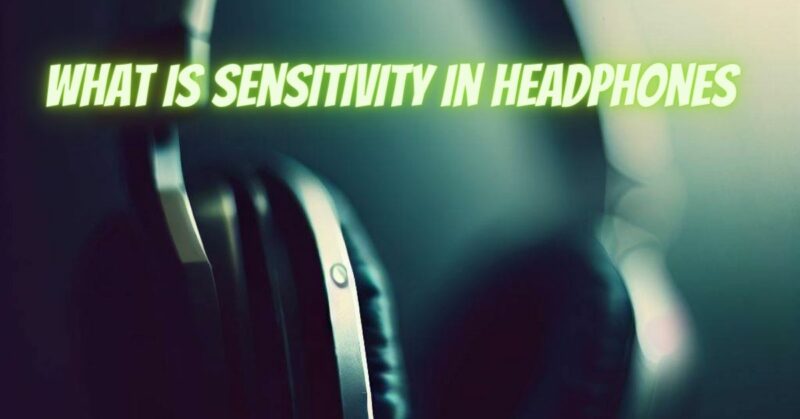In the world of headphones, various technical specifications shape the way we experience sound. One such specification that holds immense significance is sensitivity. But what exactly is sensitivity in headphones? This question delves into the realm of audio engineering, uncovering the role sensitivity plays in determining how headphones respond to the audio signal. In this article, we’ll explore the concept of sensitivity in headphones, its importance, and how it influences your listening experience.
Understanding Sensitivity in Headphones
Sensitivity in headphones is a measure of how efficiently they convert an electrical signal into audible sound. It’s often measured in decibels of sound pressure level (dB SPL) per milliwatt (mW) of electrical input. In simpler terms, sensitivity quantifies how loud headphones can get in response to a given amount of power.
Significance of Sensitivity
- Volume Level: Sensitivity directly affects the volume at which headphones play music. Headphones with higher sensitivity can achieve higher volume levels with less power, making them suitable for use with a wide range of devices, from portable players to smartphones.
- Power Efficiency: High-sensitivity headphones require less power to reach a desired volume level, which can extend battery life for portable devices and improve the efficiency of amplifiers.
- Audio Source Compatibility: Sensitivity helps match headphones to various audio sources. For instance, high-sensitivity headphones are well-suited for devices with limited power output, while low-sensitivity headphones might pair better with amplifiers.
Understanding Sensitivity Ratings
Sensitivity ratings are often presented as dB SPL/mW, indicating how many decibels of sound pressure level the headphones can produce for every milliwatt of electrical power input. Common sensitivity ranges include:
- Low Sensitivity (Less than 90 dB SPL/mW): Headphones with low sensitivity may require more power to achieve higher volume levels. They are generally better suited for use with dedicated headphone amplifiers or more powerful audio equipment.
- Medium Sensitivity (90 to 100 dB SPL/mW): Headphones falling in this range offer a balance between power efficiency and compatibility with various devices. They can often achieve satisfactory volume levels without straining portable devices.
- High Sensitivity (Above 100 dB SPL/mW): High-sensitivity headphones are efficient in converting power into sound, making them suitable for portable devices with limited power output. They are also well-suited for use in noisy environments.
Choosing the Right Sensitivity
Choosing the right sensitivity for your headphones depends on your intended use, listening environment, and the devices you plan to pair them with:
- Portable Use: If you primarily use headphones on the go with portable devices like smartphones and music players, headphones with higher sensitivity are preferable to achieve sufficient volume without draining battery life.
- Home Listening: For home listening setups with dedicated amplifiers, a wider range of sensitivities can be considered based on your desired sound quality and volume levels.
- Noise Environment: In noisy environments, headphones with higher sensitivity can help you hear your music clearly without needing to crank up the volume to uncomfortable levels.
Sensitivity in headphones is a critical parameter that influences how loud they can get and how efficiently they use power. Understanding sensitivity ratings can help you choose headphones that align with your listening preferences and intended usage. Whether you’re looking for headphones for portable use, home listening, or noise-cancellation purposes, sensitivity plays a pivotal role in delivering a satisfying and immersive auditory experience.


